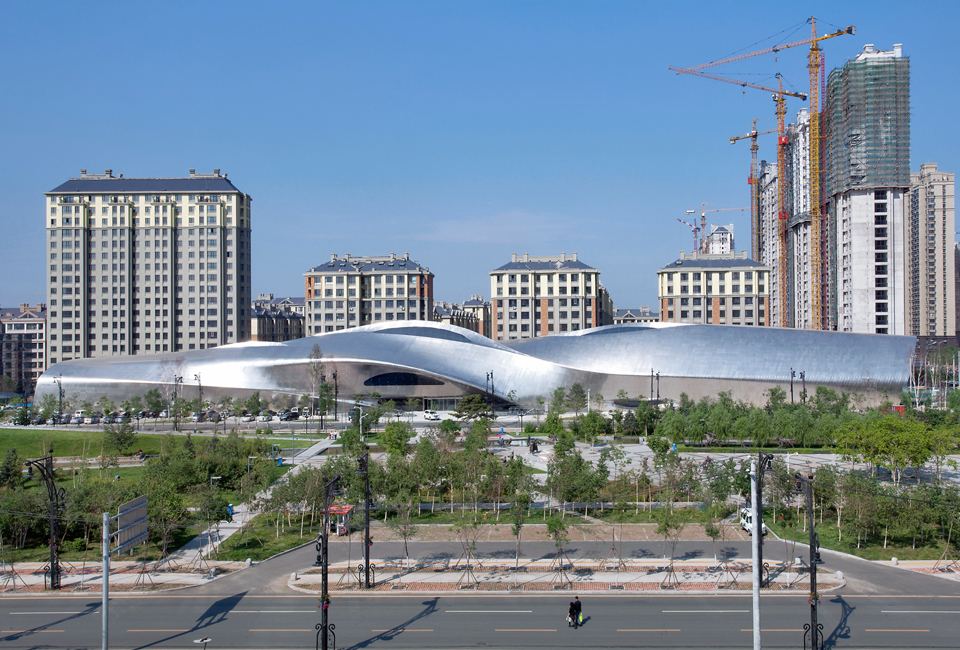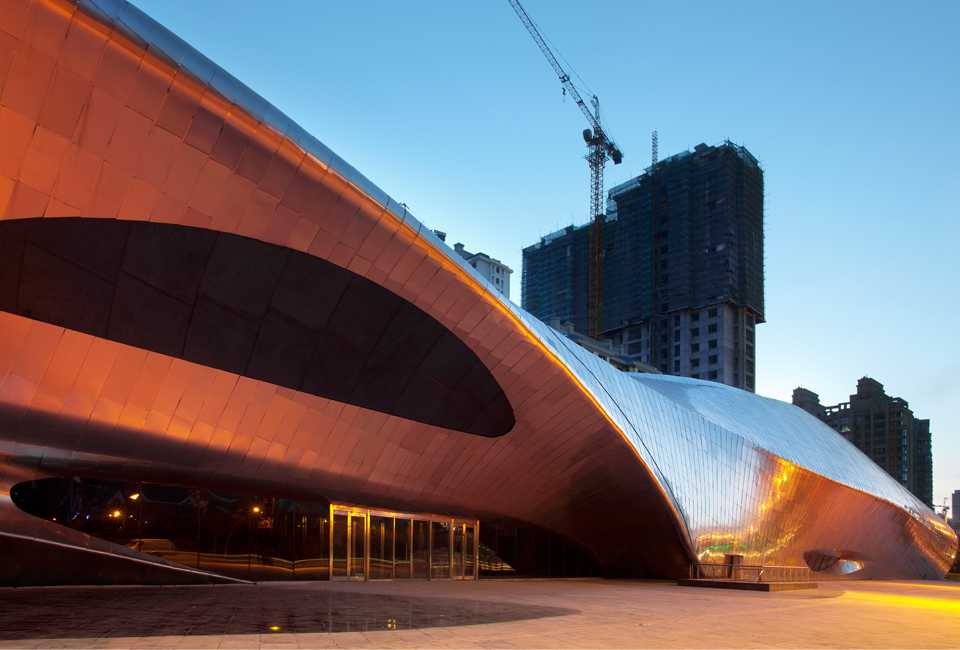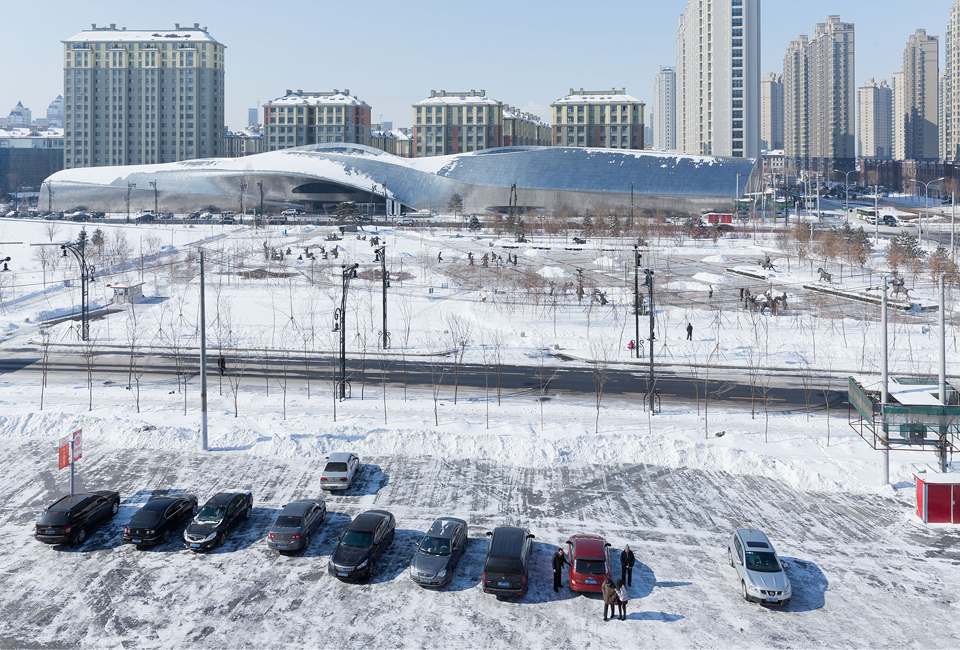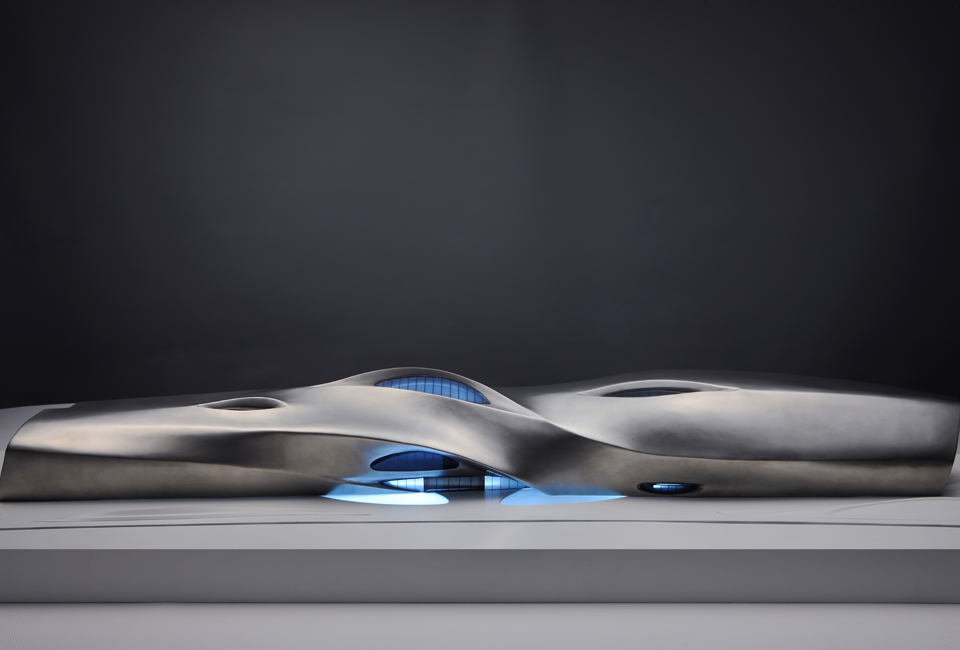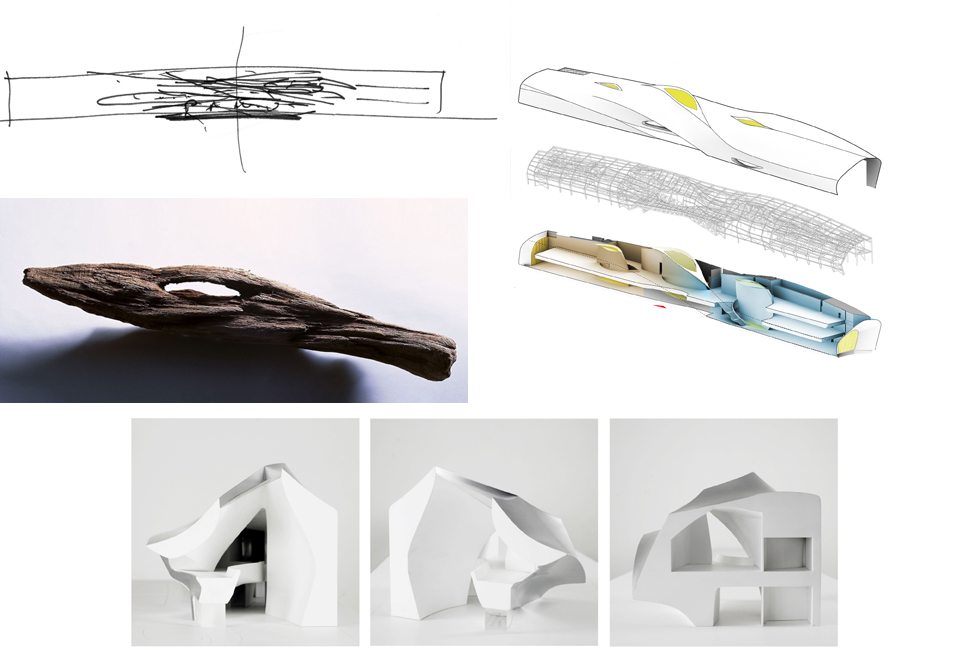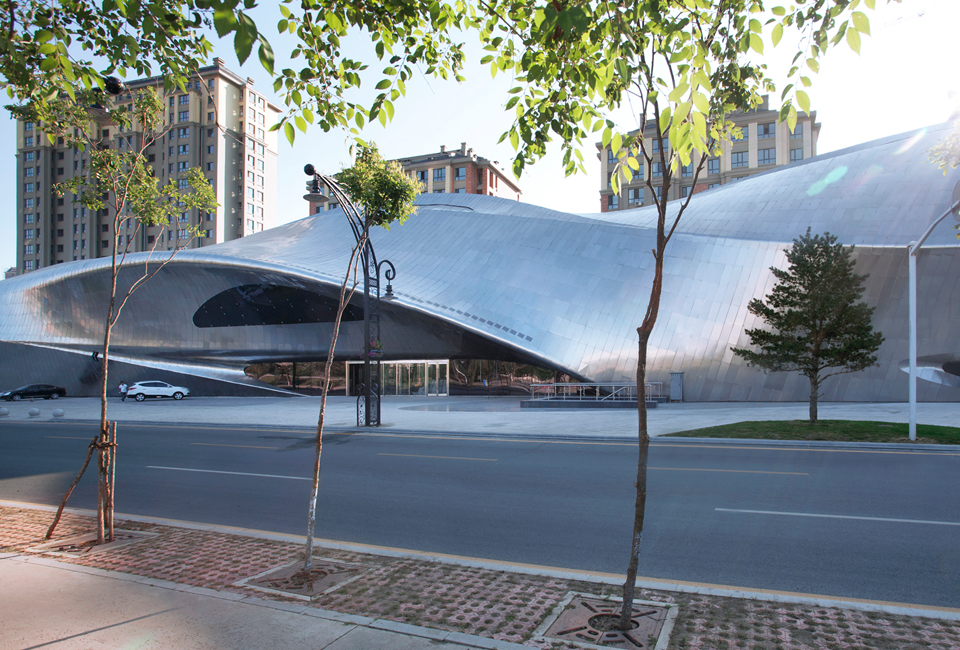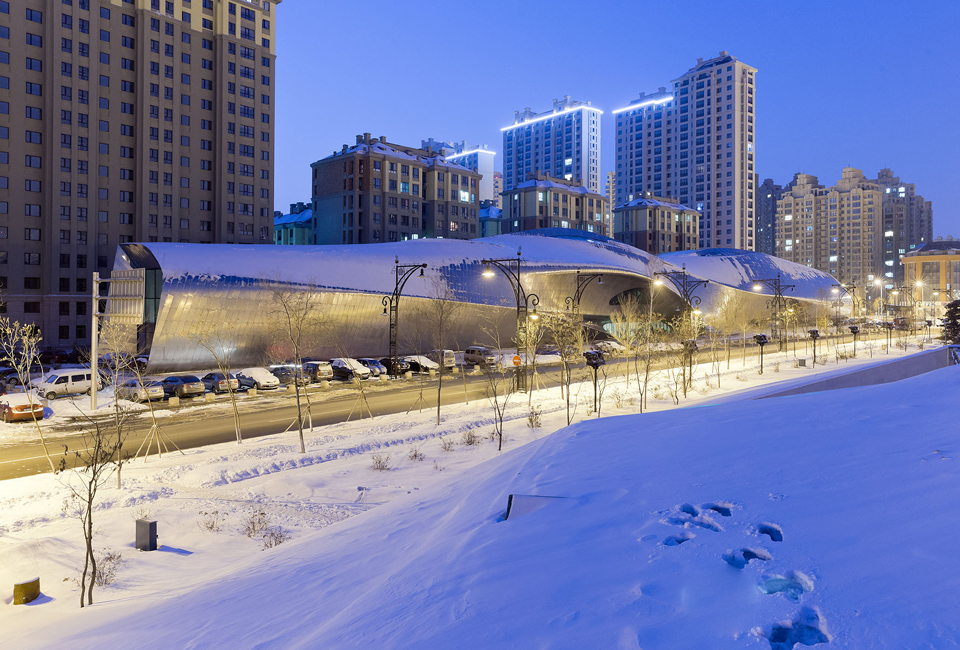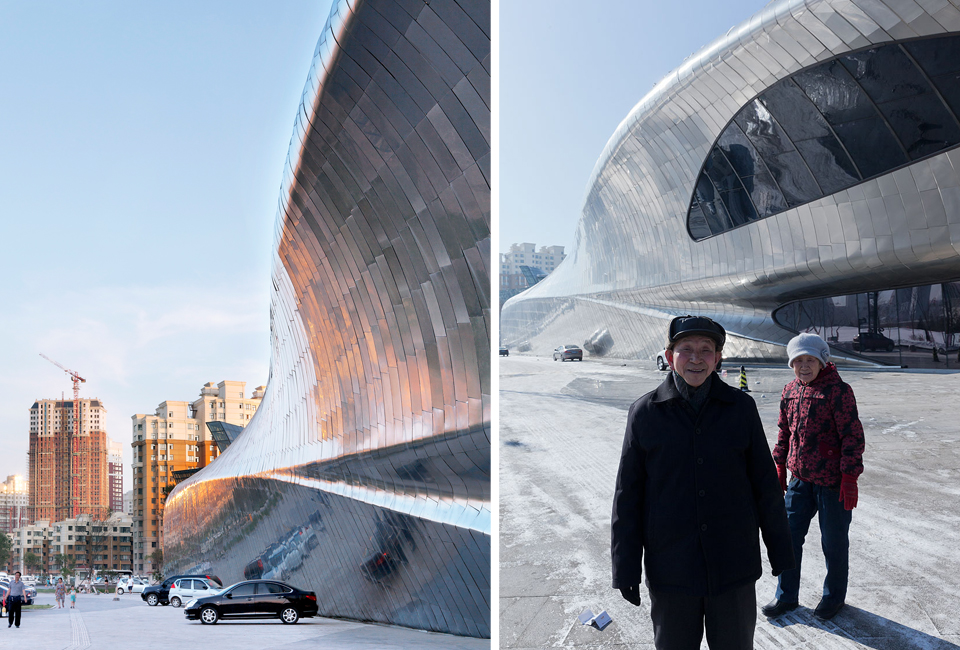The China Wood Sculpture Museum by MAD sits at its 200m height as a locational anomaly at the heart of the city of Harbin in China, quite out of place, surrounded by a densely populated Chinese-style neighborhood and residential complexes. The museum embodies some of the foremost conceptual and formal ideals that define the work of MAD, bringing out an expression and abstraction of nature to an otherwise quotidian surrounding. The boundaries between solid and liquid are blurred throughout this 13,000 sqm building, referencing the local natural scenery and landscape.
The building’s exterior is covered by polished steel plates, mirroring the surroundings and the changing light. The solid walls ensure minimal heat loss while the breaking and twisting motion of the emerging skylights splits the surface and allows in light from the low-hanging sun of northern China; this provides sufficient natural diffused illumination to the three halls on the interior.
The museum mainly houses local wood sculptures as well as paintings depicting the ice and snow of the regional scenery. In the context of the large-scale modern urban setting, the museum itself serves as a new interpretation of nature. The surreal interaction between the The museum mainly houses local wood sculptures as well as paintings depicting the ice and snow of the regional scenery. In the context of the large-scale modern urban setting, the museum itself serves as a new interpretation of nature. The surreal interaction between the museum and the city breaks through the tedium of the urban shell, revitalizing the surroundings with a new cultural feature.museum and the city breaks through the tedium of the urban shell, revitalizing the surroundings with a new cultural feature.
